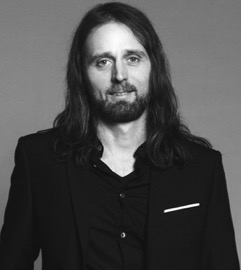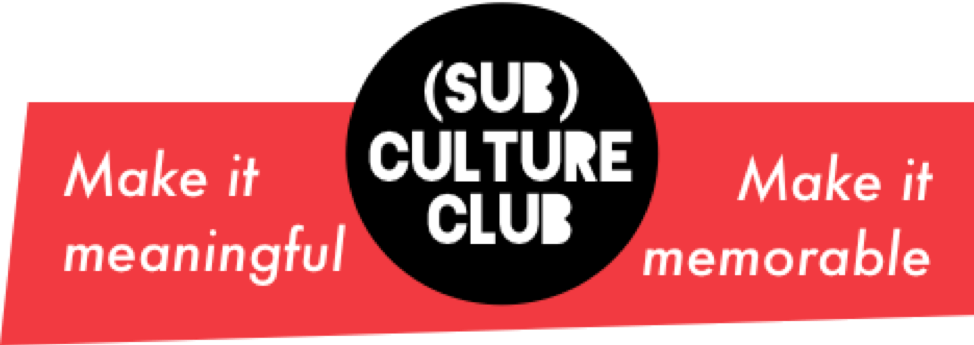
Don’t think a car mechanic could make waves in the influencer marketing industry? Think again, because that’s exactly what Tom Potts did. While working as a car mechanic, Tom did a 180 and ventured into the digital marketing world. There, he spent years in leadership roles at Starcom Mediavest Group, Lowe Profero and Edelman.
Then, he made a big decision: he wanted to be his own boss. And that’s when he started MML Consulting & Subculture Club, helping agencies and brands develop digital marketing, communications and media strategies.
We sat down with Tom to talk about how he uses influencers to deliver outcomes and drive business as well as how he uses Perlu to involve influencers upstream in the creative process. So take that much-needed coffee break and hit play to get a glimpse into Tom’s creative process.
Interview with Tom Potts
Perlu: Hello and welcome to Perlu Podcast: Influencer Marketing Reimagined, a podcast where we chat with influencer marketing professionals, social media influencers, bloggers, YouTubers, podcasters, you name it, about what has led to their success. I’m your host, Alexis Trammell, and today we are speaking with Tom Potts. Tom has worked in media planning, communications strategy, and operations for more than 15 years. Holding positions in a range of media agencies such as Edelman, MullenLowe Profero and Starcom MediaVest Group. He has led departments of media and analytics professionals, and he’s worked with a number of brands, including Apple, FedEx, Marks & Spencer and Kaiser Permanente.
Since deciding he didn’t want to have a boss anymore in 2015, Tom has built a successful consulting business, MML Consulting, working with brands, agencies and tech companies on a range of operational and commercial projects. Most recently, Tom and a small group of fellow consultants have set up an experimental venture called Subculture Club, providing strategic planning and go-to-market partnership and development for brands who want to keep their agency fees lean and their working dollars substantial.
Thank you so much for joining us today, Tom.
Tom Potts: Pleasure. Thanks for having me on.
P: What first got you interested in the media planning industry?
T: It’s sort of accidental, to a degree. I actually had a career first as a car mechanic. A lot of my family did work in and around marketing and market research, and trying to be rebellious and being a great lover of cars, I ended up working in a local garage doing an apprenticeship and spent about five years training and working as a car mechanic.
P: Wow.
T: Yeah, which is actually strangely quite a good grounding for this industry, because your head is so focused on getting things done and being productive in that world that you can sort of bring it to this industry too. Then I realized that it’s hard to make money as a car mechanic, as much as I enjoyed it. It’s easy to end up with a bad back, so I got out of that, went to college – quite a bad college as a mature student – but got a degree, and then sort of got lucky and landed a job at Zenicops Media in their digital media team really at the perfect moment. They just won British Telecom. We soon after that won Capital One, and that really was the center of the universe for digital media buying at that time in the UK, so it was sort of good fortune that got me into that place. But yeah, it was not an intentional move into media. It just sort of worked out that way.

P: In what ways have you seen the media planning industry evolve, or what has been the biggest change?
T: There’s been this big swing in two different directions, I guess, that when I started in the industry, it was in digital sort of Wild West. Everyone was still figuring it out. Measurement was very rudimentary, and then as things got more sophisticated, there emerged all these, what’s sort of called alternative revenue sources, you know – trading desks and tech platforms and all these ways to create additional revenue out of value chain, which I think was mainly driven by fees being squeezed. When I started, every fee was 15% commission. That started to get squeezed, so agencies naturally found other ways to make money. And then that went a bit too far, as most people probably read in the news.
Maximize your Revenue…Schedule a Demo of Perlu!
<As a Brand> <As an Influencer>
All the problems with transparency and the way that money was being made, and that clients were not necessarily aware of it. And that then swung things right back the other way into it being all about accountability and transparency and agencies having to expose the way that money is made and be very honest and open about it, which obviously is a good thing. I think the challenge in all that is I think we kind of forgot about what really matters, which is that we should be putting quality content and advertising in front of people in the most relevant setting and that that should be having some effect on their perception, effect on their behavior and purchasing. And that disconnect between media that was going down this sort of dark path into all of these accountability problems, and creative off doing its own thing in the other direction, I still think we haven’t really reconciled.

And so that’s one of the things that I like to be involved with – projects where media and creative are together and that we think about that measurement in a way that takes account of the creative as well as the media. Because I still think most media measurement systems really fail to take account of the importance of the creative. Therefore you can kind of game the system, and therefore it becomes about how do you buy and how do you make those numbers work for you rather than did you actually have a cause and effect on people’s behavior?
Still some work to be done there. I think people like Essence for Google sort of got on that path. Some of the work is arguably still a bit dry, but the personalization side of it is excellent. Agencies like Mediahub – that’s probably at the other end – have done a great job of being really creative as a media company and creating experiences and integrated programs, but somewhere in the middle is this very measurable model that actually is a section and behavior and I still think is an industry we’re trying to get there.
P: I’m curious – how do influencers play into that accountability that you were speaking about?
T: Yes, it’s a great question. I think that making content accountable is where influencers can play a really large role. I’m a great believer that ads, in a traditional sense, have limited value for certain types of brands and in certain situations. And quality content that links to subculture and links to topics that the commercial audience is passionate about can be really powerful, so influencers have a great starting point there. They know the subculture audiences very well. They know what grabs their attention. The part that I think we need to build in next is how does that attention translate into perception shift, brand metrics and into sales and not in a “here’s a voucher code” way but we can correlate the shift in attention to the shift in later sales.
All of which should be possible with the existing talents that we have, it’s just connecting the dots, and I think influencer marketing has a great opportunity there if we can figure it out.

P: Yeah, absolutely. And I want to talk about your Subculture Club a little bit later, but first I’m curious.
Wanting to be your own boss is one thing, but you actually made that happen. What were the steps that you took, and how did you find the confidence to make that leap?
T: I mean, this all became necessary as I was just so frustrated with working in agencies and the kind of inefficiency that you have there, sitting in rooms full of 20, 30 people, knowing that only two or three of them are actually going to do any work. And everyone else is there to sort of talk and say the right thing and to climb the ladder, and I just couldn’t do it anymore.
I really wanted to get into a situation where I was working with smaller groups of people who had a very clear objective and a very clear piece of output that they had to get to. And being a consultant gives you a much better chance of doing that, because you come in with a different time frame and given deliverables. You get them done, and you sort of move on, and therefore there’s not much space to burn hours in meeting rooms. You have to get out there and work […] which again, I think sort of takes me back to the mechanic’s mentality a bit, where every day you get a car come in and there’s a problem.
At the end of the day, you’ll go to send that car out fixed or running better than when it came in. And similarly, I think in consulting, that’s the way you can think of it.
You have to fix something and move on. You don’t want that car there any longer than it needs to be to have a good effect on it.
[It was] partly the frustration and partly having some people who gave me some initial projects that just gave me, as you say, that confidence to make the leap. As soon as you have enough [projects] that you know you’re going to be able to fill a good percentage of your time, that sets the ball rolling. And then a few years on, you have that momentum and there’s enough flows to keep you going. I mean, there’s definitely a time every year where you have a quiet month and you start to worry and you start to go through LinkedIn and start applying for random jobs. Luckily I don’t get any of them and get another project and keep going. Yeah, it’s certainly a different kind of stress involved, but to be able to be independent and responsible for your own time, I think is a huge benefit.
P: Yeah, and I’m sure that a lot of the Perlu members can empathize with that feeling of, “Should I be applying for things on LinkedIn right now, or should I continue with this independence and this career that I’m building for myself?”
T: Yeah, absolutely. And I think there’s something of that in the future of where agencies are heading. You sort of hear this term going around about the distributed agency where they have different kinds of talent playing different roles to deliver the same kind of output that an agency would […] I know a couple of people working in influencer marketing companies who basically replace the creative agency with influencers to deliver the content, and so in that model, people are getting paid to do the work. They’re not getting paid to show off and earn a salary, and I think that’s just so much more efficient. So yeah, I think the influencer piece of that has a really interesting future if it can be focused on delivering outcomes and driving business.
Drive Better ROI With Influencer Marketing
P: How have you leveraged your network throughout your rise in your career?
T: I wouldn’t say I’m an active networker. I don’t go to the events and hang out drinking wine and chatting. I’m a bit too British for that, I think. But I’ve been lucky that I have a network of people at the various different agencies that I work at who’ve moved on to do other things. Some of them are now consultants working in different areas, like grand planning. Some of them are now in other agencies that need short-term help with projects.
You help other people out when you have a project that you either can’t take on or isn’t a good fit for you and vice versa. And you find after a while, […] if you hang around with people who are good at what they do, it seems to work out well. So I’ve been lucky to work with some of these handsome people.
P: What is your creative process when coming up with a new idea for a client?
T: Yeah, it’s a really good, really tricky question I guess. As fundamentally a media guy, I’m usually paired with creative teams, whether that’s an agency, a publisher, or other kinds of creatives. That said, I’m pretty active in the ideation process. I know I’m kind of a believer that great ideas don’t come easy. You might get the genesis of an idea quite rapidly, but it really takes time to chip away and iterate that idea before you get to something you truly finished and are ready to present, so, I think some of that is, again, the right people.

I think two or three people in a room for short periods of time bouncing off each other gets you a long way. I don’t think long brainstorms with a load of people in a room are particularly effective, but with the right people in there, I think you go away and it’s just sort of toil and a healthy amount of self-doubt and questioning it and coming back to it a few hours later and seeing if it still feels right. In the end, I think you step away from it, sleep on it overnight, and you come back and look at it and don’t think you can improve it anymore and feel like you’re ready to present it and you’re proud and confident that other people are going to agree that it’s a swell idea, that it’ll be effective.
Currently the media side, it’s often your job in those situations to say okay, this intuitively this idea feels right, but how do we build a program around it that means it will actually be effective and deliver on that business goal that we started with? I think there’s no sort of easy answer to that, but I think the main thing is in this industry we sort of jump to an idea rapidly and then think that it’s right. I think it takes more time than that, and you need to sit and sweat it out a bit before it’s really a great idea.
P: Let’s talk about Subculture Club. Tell us a little bit more about that and what inspired the spinoff of your marketing consulting.
T: Yeah, sure. So, again, it was to a degree, a good fortune working with a few brands while in agencies where they had limited to a modest budget. So let’s say they’re in the one to five-million-dollar range, and they would come to the agency and you would see that budget start to get split down into so many different fees for layers of account management and project management and creative media in two separate groups, and you kind of looked at it and said, “Well, do you know what, what you need is some great thinking about your brand, some deep understanding of your audience and their behaviors, and then we need the right media and publishing and content partners to get you into market,” and the planning part of that shouldn’t take more than a sliver of that budget.

So, you know, working with some planning partners in agencies, we would occasionally have a conversation with a brand and say, look, before we dive in and start scoping this out as a full agency thing, how about this as a different path? We will go through this process. We will develop your strategy quite rapidly. We will link it to these areas of subculture where you have much relevance and you can really own. And then we’ll go straight from that strategic brief into publishers and external content partners to generate the creative idea with them, the thinking being that these people know niche subcultures better than anyone.
We did a project a while ago for a gym brand who are all about foraged ingredients, and we were talking about the link between foraged ingredients and fine dining – what they would call wild food. And if you go to an agency and expect the creative team there to know the wild food space intimately, then that’s just unrealistic. But you go to media partners like “Life and Time,” like “Fair Magazine” – these niche publications – you spend all of their time in the culinary industry dealing with these emerging trends, you talk to them for an hour and you learn more than you would googling the topic for a day because they live and breathe it.
So our approach was to talk to these brands; go straight to the people who really know that subculture intimately. And we developed it as process through that, and so then as a consultant, as I would start to speak directly to brands, that just became my spiel, I guess, to say, “actually, let’s get you through this process and let’s go straight to partners.” And you may need agencies for certain things, of course. If you’re doing advertising, you’re going to need an ad agency. If you’re doing other kinds of paid media, you’re still going to need something to execute, but that’s further downstream, actually. I think getting to that subcultural theme and a topic that they can own, particularly the smaller brands, is the first thing, and then you can decide how that manifests in market later on once you’ve worked with the go-to-market planning.
So yeah, it’s been going really well. Done it for a few different brands and it costs very little compared to the planning process in an agency and you get an output that can actually be put into market straight away, so that’s Subculture Club.
P: That’s great to hear. Love to hear that you’re coming up with these ideas upstream and using the agency downstream.
How have you used Perlu for your comprehensive brand strategy efforts upstream?
T: Yeah, yeah, great question. And I think you nailed it there. I think it’s the upstream piece. So a big part of this is how do you bring in different kinds of creative people, different kinds of content makers further upstream to have that conversation to then allow that to inform the strategy before you get into go-to-market planning, and influencers are obviously a big part of that. These people that know those topics better than anyone – a lot of them are effectively editorial people, videographers, photographers, so with Perlu we’ve been starting to figure that out in a few different ways.

I think one is exactly that. So we brief a group of influencers early on and have a little workshop session with them to generate some ideas. That might be if we’ve got a creative or strategic platform and we want to add some influence to work around that. Then we’ll go and we’ll work with Perlu to get that group together.
Get Influencers Involved Upstream
It might be that we want to validate that strategic platform. So if we’re saying, “This is our audience, and they are premium gin drinkers within this demographic who drink these different brands of gin, and this is our error subculture where we feel that there is a relevance and a connection,” talking to influencers can help validate that. Because if we’ve got people from the drinks industry or from those areas of subculture – fine dining, whatever it may be – they are much better placed than us to say, “Yeah, that really works.” That’s going to give us a lot to write about. That’s going to give us good reasons to connect with people and get them interested in the brand, or they might say, “No one cares about that,” you know? Actually, it’s too soon, or something’s already happened, and we’re too late to the table on that one.
It’s fairly free-form at this stage but, yeah, we certainly found that those influential people have a really unique perspective and just care about that topic so much. It would be unrealistic to expect agency creative teams to have such a deep understanding of all of those things. They certainly serve their purpose in their ability to make great ads, but if it’s more of a content strategy approach then influencers. And certainly Perlu is pretty useful so far.
P: That’s great to hear. Well, thank you so much for joining us today, Tom. I’ve really, really, loved what you had to say.
T: No problem, thanks for having me. Very enjoyable to share my thoughts.
P: Awesome. Thank you so much.
If you like our influencer marketing podcast and are interested in what it takes to succeed in influencer marketing, check out our blog at blog.perlu.com for more podcast and blog posts, and sign up for Perlu at perlu.com to meet, mingle, connect, collaborate and grow your career. We hope you join us for our next installation of the Perlu Podcast: Influencer Marketing Reimagined.

